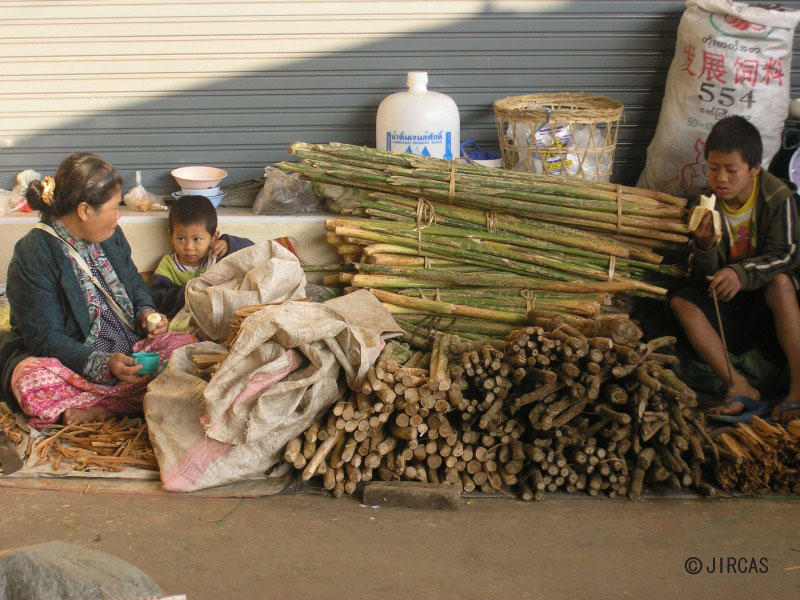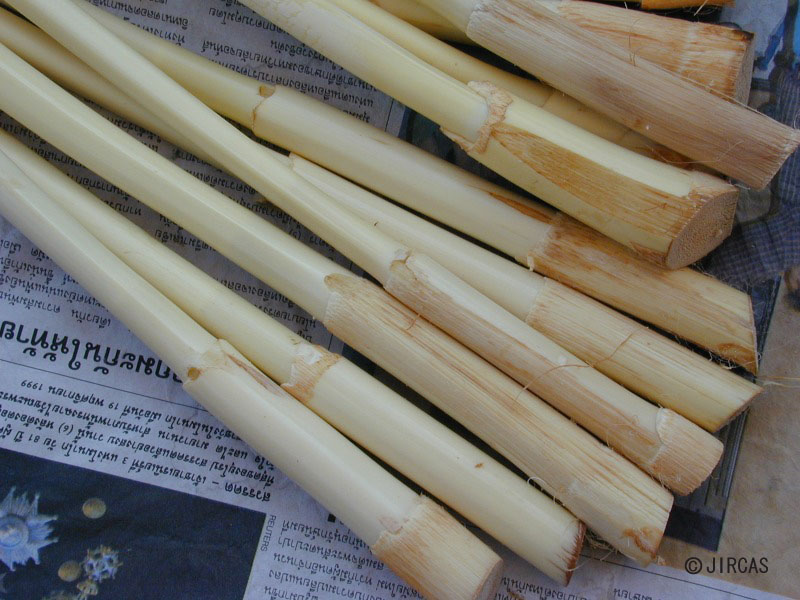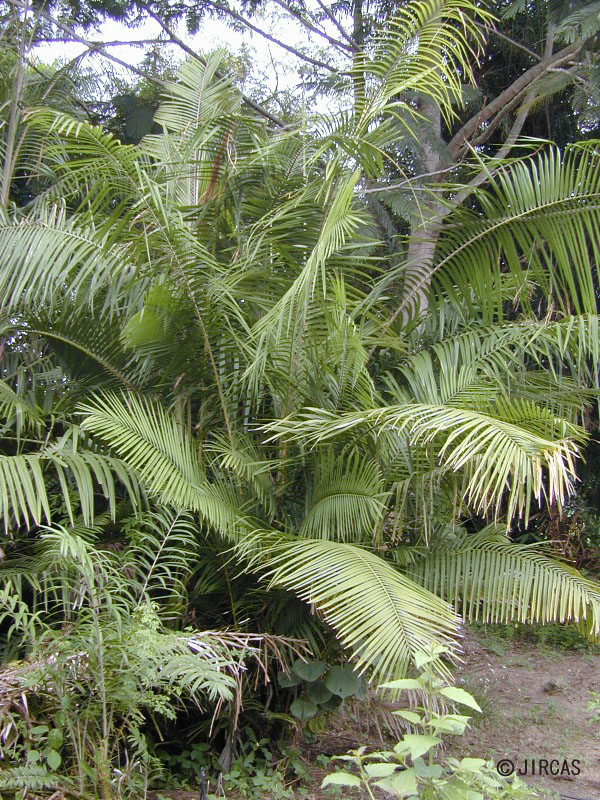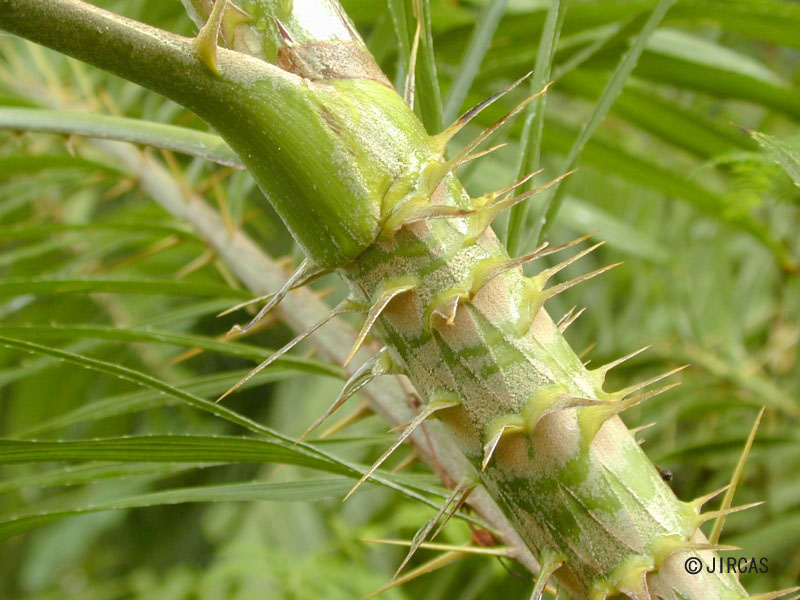Calamus spp. (Palmae)
- Scientific name
- Calamus spp.
- Family name
- Palmae (Syn. Arecaceae)
- Common name
- Rattan (English); tou, ratan (Japanese)
- Local name
- Waai
Perennial climber with numerous prickles. Leaves not hairy; leaflets numerous, firm, equidistant, upper gradually smaller, elongate-lanceolate or subensiform, aculeolate, tips bristly, costae 5–7, naked on both surfaces or sparsely aculeolate beneath, margins nearly smooth, uppermost pair connate at base; rachis and petiole with very stout conico-subulate, scattered, recurved spines. Spadices very long, hairy; lower spathes very long, tubular, unarmed or with keels spined. Fruiting calyx very small, pedicelliform. Fruit small, ovoid or globose, abruptly mammillate, brown.
Over 40 native rattan species are distributed in evergreen forests throughout Thailand. Some species are cultivated and their stems harvested for furniture making. Propagated by seed sowing and transplanting seedlings at the few true leaves stage to permanent sites at a spacing of 4–5 m.
The inner part of the young shoot (i.e., rattan heart) is cooked and served in local curry dishes.
The inner part of the young shoot (i.e., rattan heart) is cooked and served in local curry dishes.







